Rhythmic Gymnastics Basics
-
Rope
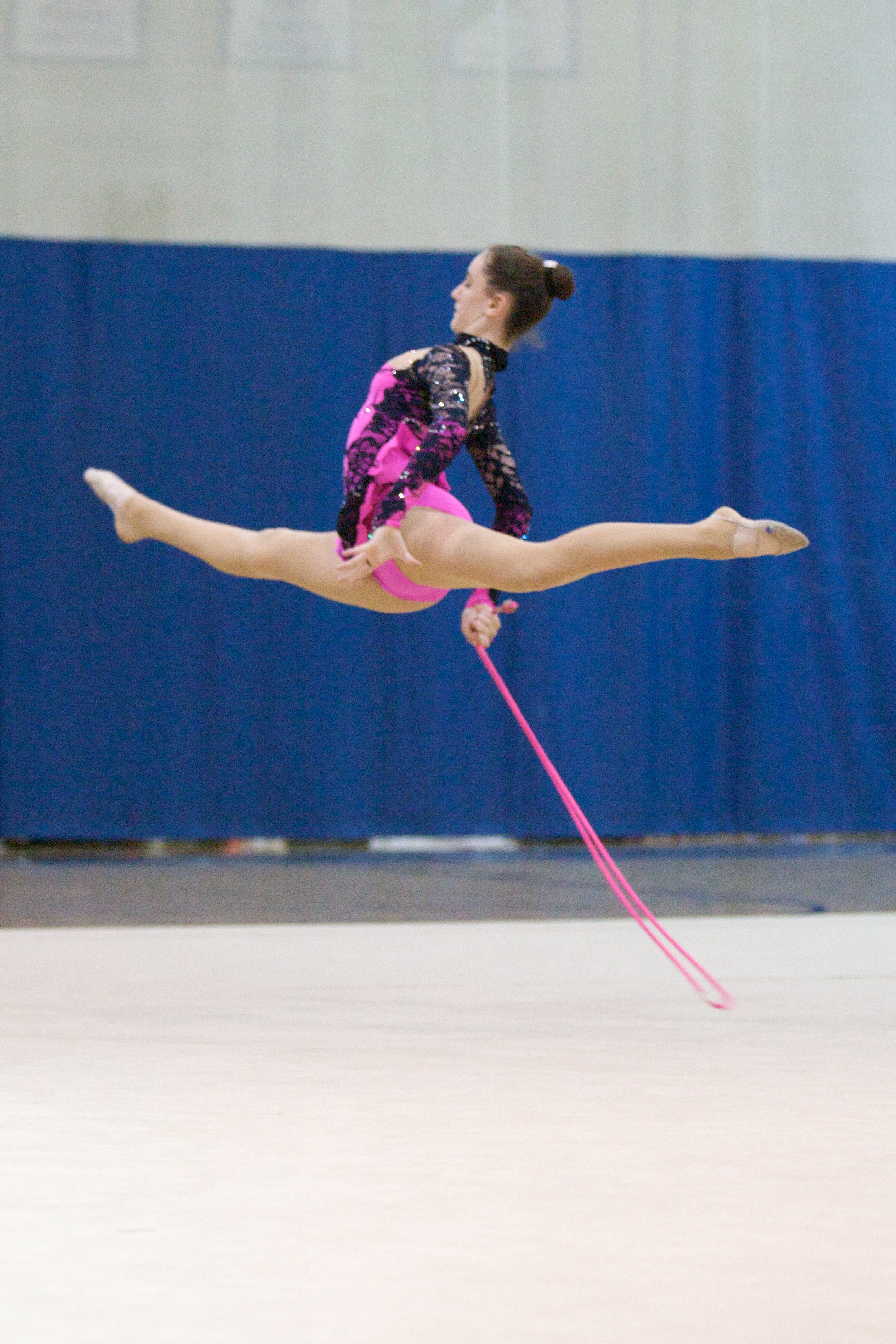
The rope is proportionate in length to the gymnast’s height and is knotted at each end. Typical movements are swings, circles, figure-8’s, releases, wrapping around a part of the body, tosses and jumps through the rope.
-
Hoop
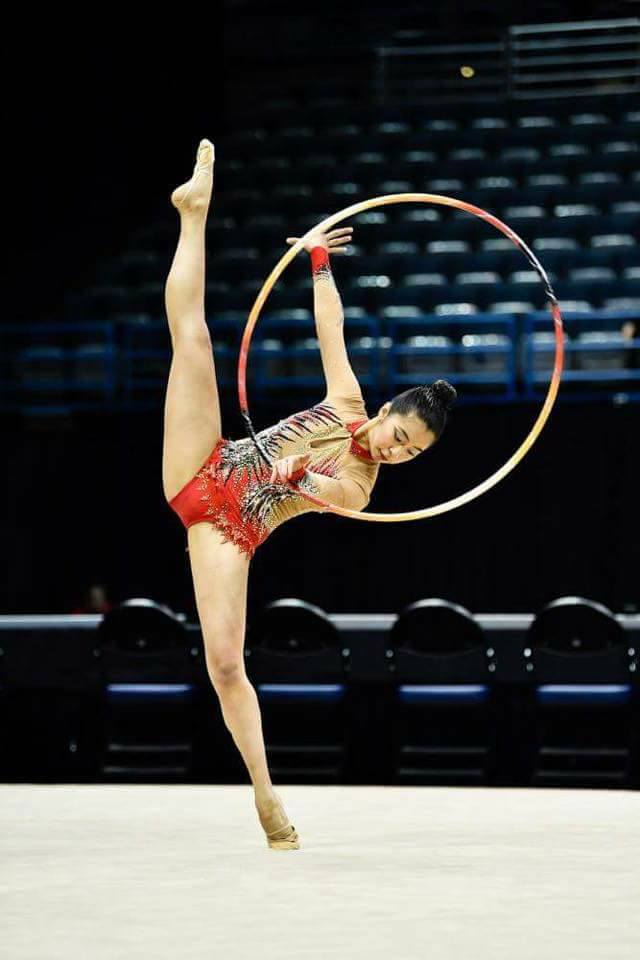
The hoop is similar to a hula hoop, but there are no beads inside and the gymnast decorates it with colored tape to match their leotard. The hoop can be circled, rolled, spun and tossed. A gymnast can pass over or through the hoop. A typical movement is the “boomerang” which is a move that rolls the hoop forward and with a snap of the wrist makes it roll back to the gymnast.
-
Ball
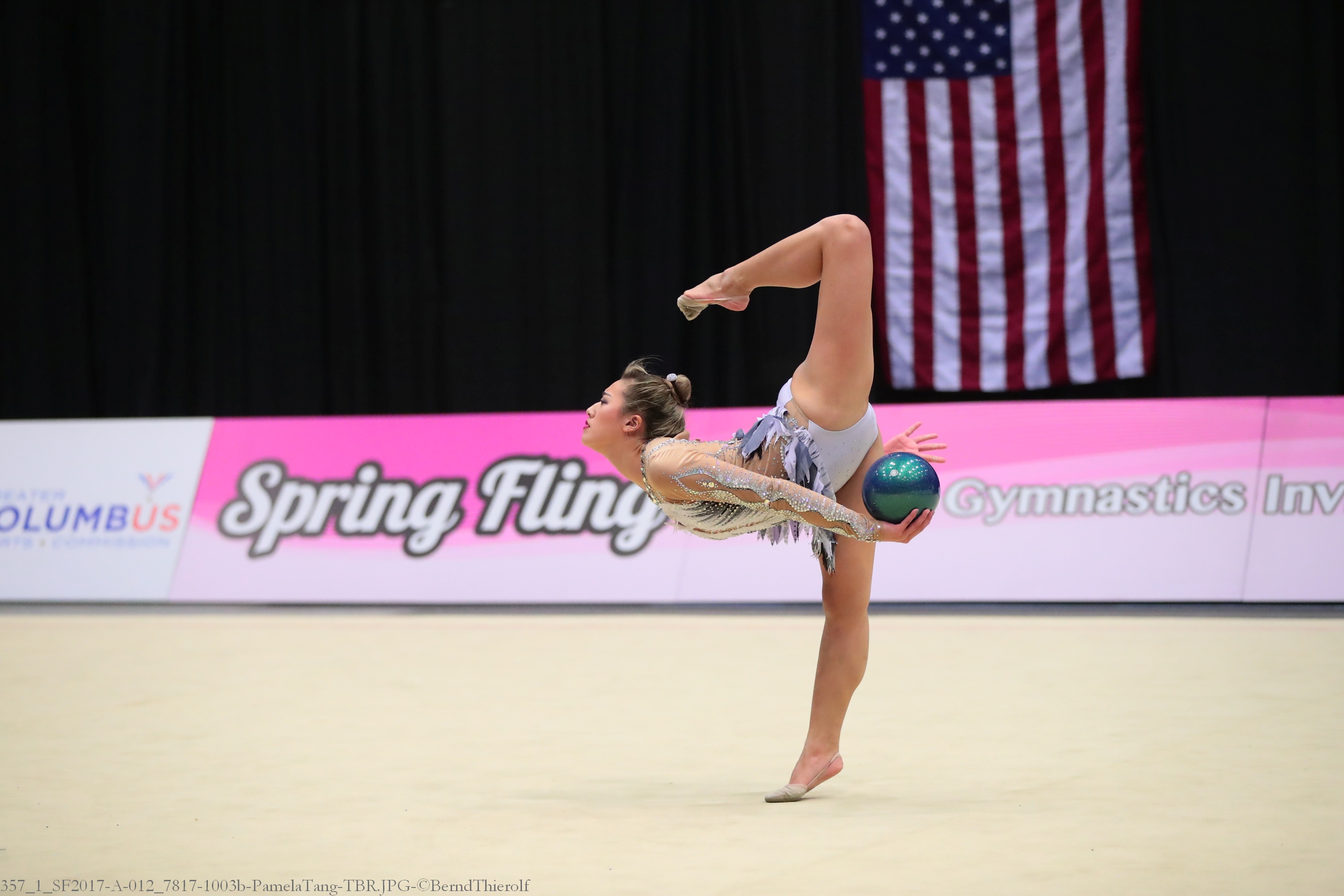
In the ball exercise, gymnasts roll, throw, bounce, catch and trap the ball. The ball is made of rubber or plastic and comes in various sizes and colors. The gymnast must not “grip” the ball, but instead must show balance and control and a fluid movement of the ball. The ball moves in harmony with the gymnast and should appear to be an extension of the body
-
Clubs
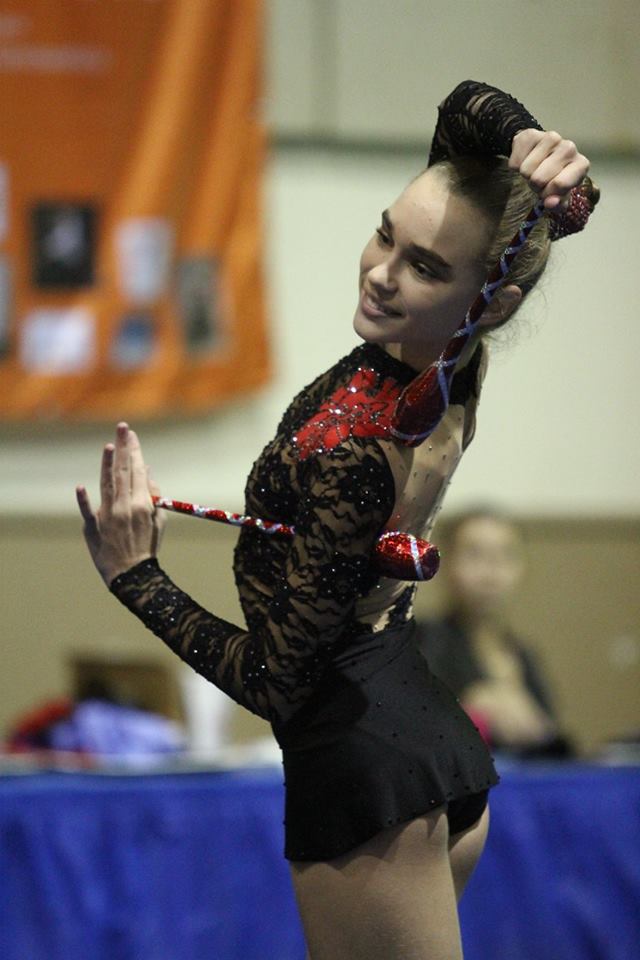
The clubs are made of plastic or rubber. Gymnasts swing, throw, catch , circle, tap and trap the pair of clubs. Both clubs must be in constant motion. Since there are two clubs, the gymnast must be equally proficient with the right and left hand.
-
Ribbon
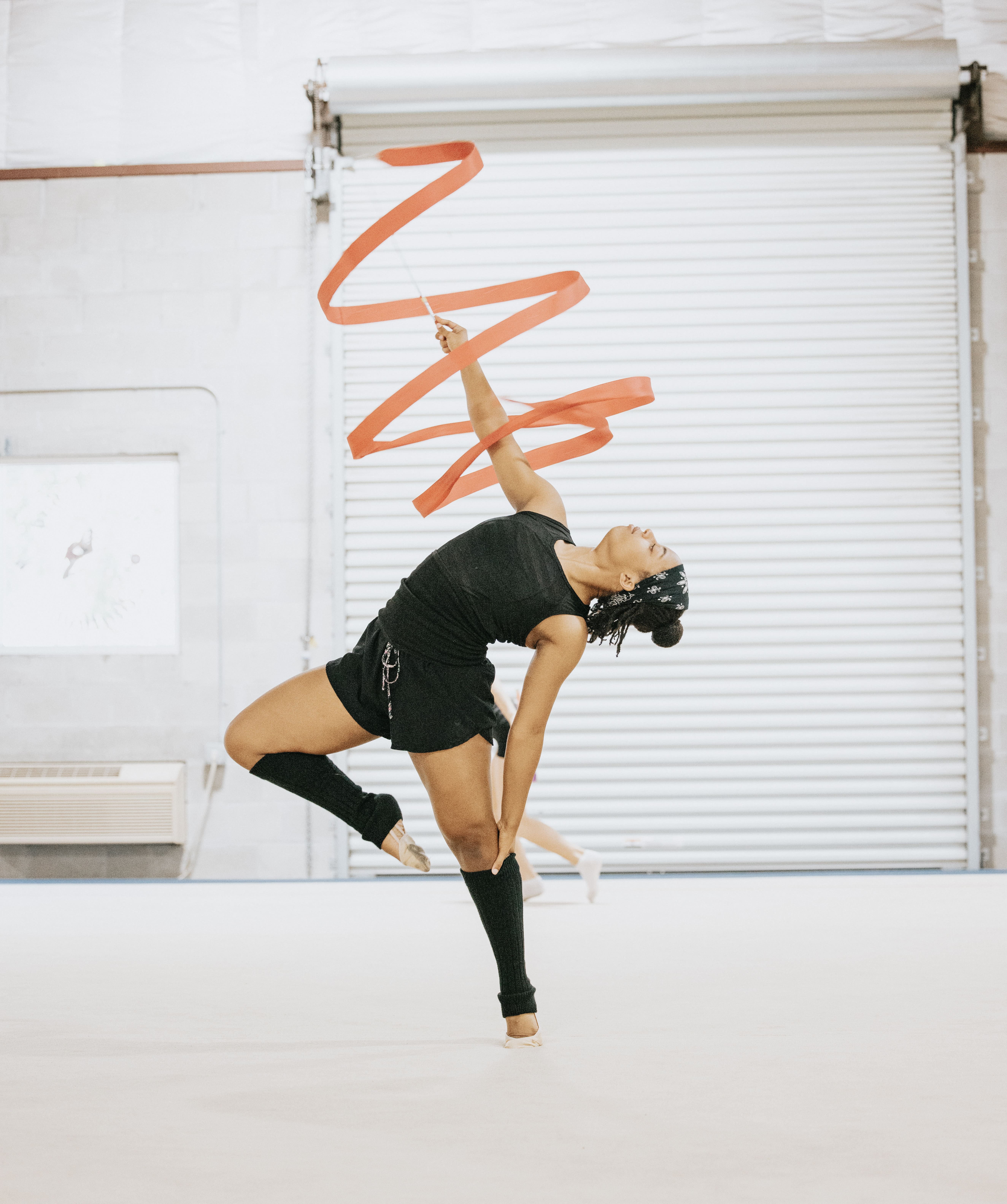
The ribbon is 4.5-6 meters long, depending on the age of the gymnast. The ribbon is attached to a stick made of plastic or fiberglass. The ribbon must be in constant motion showing different patterns, such as spirals, snakes and figure 8”s. The ribbon is also tossed in the air and on the floor.
Competitions
Gymnastic Levels